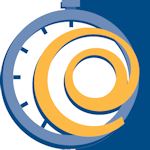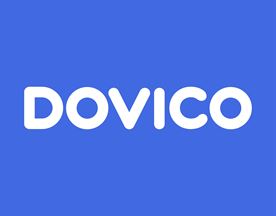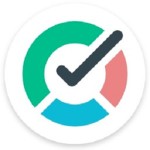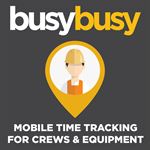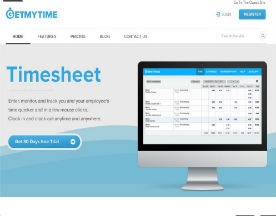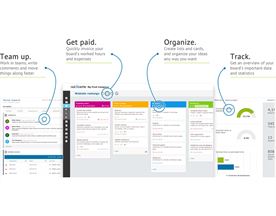Time tracking software is a tool that allows individuals and organizations to track the amount of time spent on various tasks and projects. It can help to improve productivity, increase accountability, and provide insights into how time is being spent.
Time tracking software can be used by individuals, freelancers, small businesses, and large corporations to streamline workflow, reduce wasted time, and increase overall efficiency.
There are numerous benefits to using time tracking software. Firstly, it can help individuals and teams to prioritize tasks and manage time more effectively. By knowing exactly how much time is being spent on each task, it becomes easier to identify inefficiencies and eliminate unnecessary activities.
Time tracking software can also provide valuable data on how long it takes to complete specific tasks, which can be useful for estimating project timelines and budgets.

Another benefit of time tracking software is that it can increase accountability. By monitoring how much time is being spent on each task, individuals and teams can ensure that they are meeting deadlines and staying on track.
Additionally, time tracking software can help to reduce distractions and increase focus, as users become more aware of how they are spending their time.
This article will provide a comprehensive guide to the best time tracking software for productivity. It will begin by discussing the key features to look for in time tracking software, such as time tracking capabilities, reporting and analytics features, integrations, gps tracking, user interface, unlimited users, customization options, and pricing.
The article will then provide an overview of the top time tracking software options, including Toggl, Harvest, RescueTime, Clockify, and Everhour. Each software option will be discussed in detail, including its features, benefits, and pricing plans.

The article will also provide tips for choosing the right time tracking software for individual needs, such as defining needs and goals, evaluating software features, considering user feedback, and taking advantage of free trials and demos.
In addition there will be tips provided for effective time tracking, including setting clear goals and deadlines, prioritizing tasks, using time tracking data to analyze and improve productivity, avoiding distractions, and communicating with team members.

Features To Look For In Time Tracking Software
Time Tracking Capabilities
Time tracking software should have a range of tracking options available to suit different preferences and needs. This includes start/stop timers, manual input, and automatic tracking. Start/stop timers allow users to easily track the time spent on specific tasks, while manual input allows users to manually enter the time spent on tasks that cannot be tracked automatically. Automatic tracking allows the software to track time in the background, without any manual intervention required.

Reporting And Analytics Features
Time tracking software should offer reporting and analytics features that allow users to view and analyze their time data. This includes data on time spent on specific tasks or projects, time spent on different types of activities, and time spent on different days or weeks. Users should be able to generate reports and graphs to help them better understand their time usage and identify areas for improvement.

Integrations With Other Software
Time tracking software should integrate with other software that users are using, such as project management tools or accounting software. This can help to streamline workflow and reduce manual data entry. Integration with other software can also allow users to access additional features and functionality.
Ease Of Use And User Interface
The best time tracking tools should be easy to use and have an intuitive user interface. Users should be able to quickly and easily start and stop timers, enter time manually, and view their time data. The user interface should be visually appealing and easy to navigate.

Customization Options
Time tracking software should offer customization options to allow users to tailor the software to their specific needs. This can include customizing the data fields that are tracked, setting up custom tags or categories for time entries, and customizing reports and graphs.
Pricing And Affordability
Time tracking software should be affordable and offer pricing plans that suit different budgets and needs. This can include free plans with limited features, as well as paid plans with additional features and functionality. Pricing plans should be transparent and easy to understand, with no hidden fees or charges.
Overall, the best time tracking software will offer a range of features and functionality that meet the needs of individual users and organizations. By considering these key features when selecting a time tracking software, users can ensure that they are getting the most value from their investment and improving their productivity and efficiency.

Top Time Tracking Software For Productivity
We’ll discuss and compare some of the best time tracking software available on the market.

Toggl
Toggl is a popular time tracking software that is known for its simple and intuitive user interface. It offers time tracking capabilities such as a start/stop timer, manual input, and automatic tracking. Toggl also provides detailed reporting and analytics features, allowing users to monitor their productivity and identify areas for improvement. It integrates with popular software like Trello, Asana, and Jira, and offers customization options such as the ability to create project templates and set up billable rates. Toggl has both free and paid plans, with pricing starting at $10 per user per month.
Pros:
Simple and intuitive user interface
Offers a range of time tracking capabilities
Provides detailed reporting and analytics features
Integrates with popular software
Offers customization options
Has both free and paid plans
Cons:
Paid plans can be expensive for larger teams
Limited project management features compared to other software options

Harvest
Harvest is a time tracking software that is designed for teams and freelancers. It offers features such as time tracking, invoicing, and project management, all in one platform. Harvest’s time tracking capabilities include a start/stop timer, manual input, and automatic tracking, and it also provides detailed reporting and analytics features. Harvest integrates with popular software such as QuickBooks, Trello, and Asana, and allows users to customize their reports and invoices. Harvest has both free and paid plans, with pricing starting at $12 per user per month.
Pros:
Offers a range of features for time tracking, invoicing, and project management
Provides detailed reporting and analytics features
Integrates with popular software
Allows for customization of reports and invoices
Has both free and paid plans
Cons:
Can be overwhelming for some users with its many features
Limited customization options compared to other software options

RescueTime
RescueTime is a time tracking software that is designed to help users improve their productivity by tracking and analyzing their digital habits. It automatically tracks time spent on websites and applications, and provides detailed reports on daily activities. RescueTime also offers features such as setting goals, blocking distracting websites, and providing alerts when users spend too much time on a particular task. RescueTime integrates with popular software like Slack, Trello, and Asana. It has both free and paid plans, with pricing starting at $6 per user per month.
Pros:
Automatically tracks time spent on websites and applications
Provides detailed reports on daily activities
Offers features to help improve productivity
Integrates with popular software
Has both free and paid plans
Cons:
Limited manual time tracking capabilities
Limited customization options compared to other software options

Clockify
Clockify is a free time tracking software that offers time tracking capabilities such as a start/stop timer, manual input, and automatic tracking. It also provides detailed reporting and analytics features, allowing users to monitor their productivity and identify areas for improvement. Clockify integrates with popular software like Trello, Asana, and Jira, and offers customization options such as the ability to create billable rates and set up project budgets. Clockify also has paid plans that offer additional features and support, with pricing starting at $9.99 per user per month.
Pros:
Offers a range of time tracking capabilities
Provides detailed reporting and analytics features
Integrates with popular software
Offers customization options
Has a free plan available
Cons:
Paid plans can be expensive for larger teams
Limited customer support compared to other software options

Everhour
Everhour is an employee time tracking software that is designed for teams and agencies. It offers time tracking capabilities such as a start/stop timer, manual input, and automatic tracking, and also provides detailed reporting and analytics features. Everhour integrates with popular software like Trello, Asana, and Basecamp, and allows users to set up billable rates, track budgets, and manage employee timesheets. Everhour has both free and paid plans, with pricing starting at $8 per user per month.
Pros:
Offers a range of features for time tracking, project management, and employee timesheets
Provides detailed reporting and analytics features
Integrates with popular software
Offers customization options
Has both free and paid plans
Cons:
Can be overwhelming for some users with its many features
Limited invoicing capabilities compared to other software options
Overall, these time tracking software options offer a range of features and pricing options to help users improve their productivity and efficiency. Choosing the right software will depend on individual needs and goals, so it’s important to evaluate each option carefully and take advantage of free trials or demos before making a final decision.

How To Choose The Right Time Tracking App For Your Needs
Define Your Needs And Goals
Before choosing a time tracking software, it’s important to define your specific needs and goals. This includes determining what features you need and what type of tracking will work best for your team. Consider your team’s size, how you want to track time, what reports you need, and what integrations are important to you. Having a clear understanding of your needs and goals will make it easier to evaluate software options and make the right decision.
Evaluate Software Features And Compare Options
Once you’ve defined your needs and goals, it’s time to start evaluating time tracking software options. Look for software that offers the features you need, such as manual time entry, automatic tracking, reporting, and analytics. Consider the user interface and ease of use, as well as any integrations with other software you may be using. Compare multiple options to find the best fit for your team.

Consider User Reviews And Feedback
Reading user reviews and feedback can give you valuable insight into the pros and cons of different time tracking software options. Look for reviews from users who have similar needs and goals as your team, and pay attention to any common complaints or issues. This can help you make an informed decision and avoid any potential problems with the software.
Take Advantage Of Free Trials And Demos
Many time tracking software options offer free trials or demos, which can be a great way to test out the software before committing to a plan. Take advantage of these opportunities to try out the software and see how it works for your team. Use this time to evaluate the user interface, test out different features, and see if the software meets your specific needs.

Finalize Your Decision And Implement The Software
After evaluating software options, reading user reviews, and testing out the software through free trials and demos, it’s time to finalize your decision and implement the software. Make sure to choose the software that best meets your team’s needs and goals. Plan out the implementation process, communicate with your team about how to use the software, and provide any necessary training or support to ensure a smooth transition.

Tips For Effective Time Tracking
Set Clear Goals And Deadlines
Setting clear goals and deadlines helps to keep your team on track and focused. Make sure that everyone knows what tasks need to be completed and when they are due. This will help ensure that everyone is working towards the same goals and can help reduce time spent on unnecessary tasks.
Prioritize Tasks And Track Time Accordingly
It’s important to prioritize tasks and track time accordingly to ensure that your team is spending their time on the most important and valuable tasks. Encourage your team to focus on the tasks that will have the biggest impact on your goals, and track time spent on each task to help identify areas for improvement.

Use Time Tracking Data To Analyze And Improve Productivity
One of the biggest benefits of time tracking software is the ability to analyze data and identify areas for improvement. Use the data to identify trends and patterns in your team’s work, and use this information to make adjustments to processes and procedures to increase productivity.
Avoid Multitasking And Distractions
Multitasking and distractions can be major productivity killers. Encourage your team to focus on one task at a time, and to minimize distractions such as social media and email notifications. By focusing on one task at a time, your team can improve their productivity and get more done in less time.

Communicate With Team Members And Stakeholders
Effective communication is key to ensuring that everyone is on the same page and working towards the same goals. Encourage your team to communicate regularly about their progress, and to seek feedback and support when needed. Make sure that stakeholders are aware of progress and any potential issues, and work together to find solutions to any problems that arise.

Different Types Of Time Tracking
Time tracking software is an essential tool for many professionals, particularly those who work in project-based environments or who need to bill clients based on the amount of time spent on specific tasks. However, with so many different types of time tracking software available, it can be challenging to know which one to choose. In this section, we will explore the different types of time tracking software available and how they differ in terms of features and functionality.
Desktop Applications
One of the most common types of time tracking software is desktop applications. These are software programs that you download and install on your computer or laptop, and they allow you to track your time spent on various tasks and projects. Desktop applications offer a wide range of features, including the ability to set timers, enter time manually, generate reports, and analyze data. Many desktop applications also offer integration with other software programs, such as project management tools or invoicing software.

Browser Extensions
Another type of time tracking software is browser extensions. These are small programs that you install within your web browser, such as Chrome or Firefox, and they allow you to track your time spent on different websites and online activities. Browser extensions are particularly useful for professionals who spend a lot of time working online, such as web designers or social media managers. They typically offer features such as tracking time spent on specific websites, blocking distracting websites, and generating reports.
Mobile Apps
Mobile apps are another popular type of time tracking software. These are time tracking apps that you can download to your smartphone or tablet, and they allow you to track your time spent on various tasks and projects while on-the-go. Mobile apps offer many of the same features as desktop applications, such as setting timers, entering time manually, and generating reports. However, they often have a more streamlined interface designed for mobile devices.
Cloud-based
Cloud-based time tracking software is becoming increasingly popular, particularly for teams and organizations. This type of software is hosted on remote servers and accessed via the internet, which allows for easy collaboration and sharing of data among team members. Cloud-based time tracking software typically offers many of the same features as desktop applications, but with the added benefit of being accessible from anywhere with an internet connection.
Specialized Software
Another type of time tracking software is specialized software designed for specific industries or professions. For example, there are time tracking software programs designed specifically for lawyers, accountants, and consultants.
These programs typically offer features and functionality tailored to the needs of those particular professions, such as integration with accounting software or the ability to track billable hours.

So, in summary, there are many different types of time tracking software available, each with its own unique features and benefits. Desktop applications are a good choice for professionals who primarily work on their computers, while browser extensions are ideal for those who spend a lot of time working online. Mobile apps are a good choice for those who need to track their time on-the-go, while cloud-based time tracking software is ideal for teams and organizations.
Specialized software is a good choice for professionals in specific industries or professions. By understanding the different types of time tracking solution available, professionals can choose the best option for their particular needs and maximize their productivity.
Potential Drawbacks Of Time Tracking Tools
While time tracking software can be a valuable tool for improving productivity and efficiency, it also has the potential to create some drawbacks if not used properly. Here are some of the potential risks associated with time tracking software and some strategies for mitigating them:
Micromanagement
One of the potential risks of using time tracking software is that it can lead to micromanagement. When employees feel like they are constantly being monitored and tracked, it can lead to a feeling of being micromanaged, which can decrease motivation and productivity.

To avoid micromanagement, it’s important to use time tracking software as a tool for collaboration and communication, rather than just for employee monitoring. Managers should use time tracking software to identify areas where employees may need additional support or training, rather than to monitor every aspect of their work.
Burnout
Another potential risk of time tracking software is that it can lead to burnout. When employees are constantly monitoring their time and focusing on productivity, they may be more likely to work longer hours and neglect self-care, which can lead to burnout.

To mitigate the risk of burnout, it’s important to set realistic goals and expectations for employees. Make sure that employees have clear guidelines for how much time they should be spending on specific tasks and that they are given breaks and time off to rest and recharge. Encourage employees to take breaks and prioritize self-care, and be open to feedback and suggestions for how to improve the work environment.
Lack Of Flexibility
Another potential risk of time tracking software is that it can lead to a lack of flexibility. When employees feel like they are constantly being monitored and evaluated based on their productivity, they may be less likely to take breaks or make adjustments to their work schedule.

To mitigate the risk of a lack of flexibility, it’s important to use time tracking software in a way that allows for flexibility and creativity. Encourage employees to take breaks and to adjust their work schedule as needed to accommodate their personal needs and preferences. Consider using time tracking software in conjunction with other tools, such as project management software, to allow for more flexibility in scheduling and prioritization.
Lack Of Trust
Another potential risk of time tracking software is that it can lead to a lack of trust between employees and management. When employees feel like they are being constantly monitored and evaluated, it can create a feeling of distrust and reduce motivation and morale.
To mitigate the risk of a lack of trust, it’s important to use time tracking software in a transparent and collaborative way. Be clear about why time tracking software is being used and how it will be used to improve productivity and collaboration. Be open to feedback and suggestions for how to improve the use of time tracking software, and make sure that employees feel comfortable expressing their concerns and feedback. Encourage a culture of transparency and trust, and make sure that employees feel valued and supported in their work.
Ultimately, time tracking software can be a valuable tool for improving productivity and efficiency, but it also has the potential to create some drawbacks if not used properly. By being mindful of the potential risks and strategies for mitigating them, managers can use time tracking software in a way that promotes collaboration, transparency, and trust.

Effective Implementation Of Time Tracking
Effective implementation of time tracking software within a team or organization is essential to achieving its full benefits. The following are some specific guidance on how to effectively implement time tracking software:
Establish Clear Guidelines And Best Practices
To ensure consistency in the use of time tracking software, it is important to establish clear guidelines and best practices for its use. These guidelines can include policies on when and how to use the software, expectations for accuracy, and guidelines for data sharing.

Provide Training And Support
To ensure that all team members are using the software correctly, it is important to provide adequate training and support. This can include providing training sessions, written guidelines, and ongoing support through an online help center or dedicated support team.
Encourage Communication
Time tracking software can help to facilitate communication between team members by providing a centralized platform for tracking progress and sharing information. Encouraging communication and collaboration can help to increase accountability and promote a culture of transparency within the organization.

Monitor Usage And Provide Feedback
To ensure that the software is being used effectively, it is important to monitor usage and provide feedback to team members. This can include regular check-ins to review progress and provide feedback on how to improve time management skills.
Integrate Time Tracking Software With Other Tools
Integrating time tracking software with other tools such as project management software, CRM systems, or payroll software can help to streamline workflows and improve efficiency.

Customize The Software To Fit Your Team’s Needs
Every team is unique, and time tracking software should be customized to fit the specific needs of your team. This can include setting up custom fields, adding new features, or modifying reports to better suit your team’s needs.
Regularly Evaluate And Update Your Software
As your team grows and evolves, your time tracking software needs may change. It is important to regularly evaluate and update your software to ensure that it is meeting the needs of your team and providing the necessary features and functionality.
By following these guidelines, organizations can effectively implement time tracking software within their team and enjoy the many benefits that it can bring, including increased productivity, improved time management skills, and better project management.

Conclusion
Time tracking software is an essential tool for increasing productivity in the workplace. By helping you and your team to better understand how time is being spent, you can identify areas for improvement and make data-driven decisions to optimize your workflow. Time tracking software can also help you to set and meet deadlines, accurately bill clients, and track project profitability.
There are several great options when it comes to time tracking software. Toggl is a popular choice with a user-friendly interface and a variety of features to help you track time and analyze productivity. Harvest is another excellent option, offering integrations with popular project management tools and robust reporting capabilities. RescueTime is great for tracking time spent on specific websites and applications, while Clockify offers a range of features for tracking time across multiple projects and clients. Finally, Everhour is an excellent choice for teams that work on multiple projects at once, with advanced reporting features and integrations with popular project management tools.

We’d like to, finally share a summary of our thoughts and recommendations for using a time tracking tool to increase productivity. When it comes to using time tracking solutions to increase productivity, it’s important to define your goals and needs, evaluate software features and compare options, consider user reviews and feedback, take advantage of free trials and demos, and finalize your decision and implement the software. Once you have the software in place, focus on setting clear goals and deadlines, prioritizing tasks and tracking time accordingly, using basic time tracking features and data to analyze and improve productivity, avoiding multitasking and distractions, and communicating regularly with team members and stakeholders. By following these tips and using the right time tracker, you can increase productivity and achieve greater success in your work.

